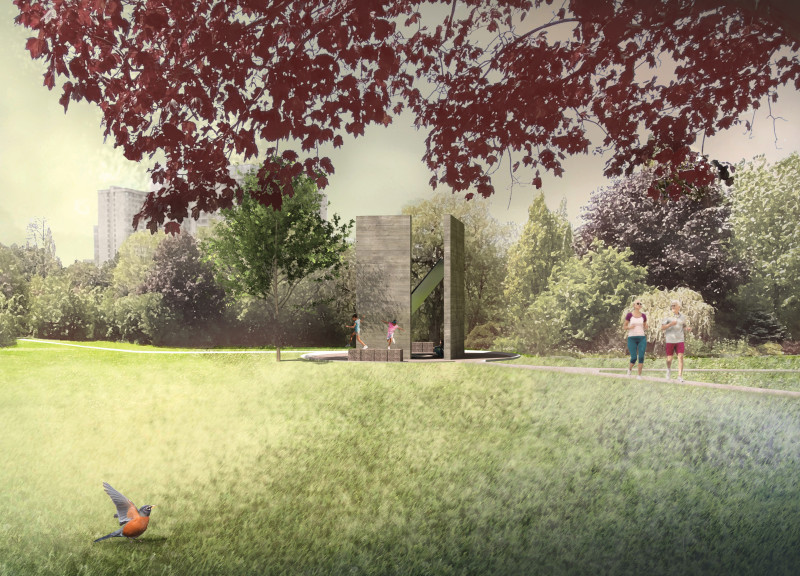5 key facts about this project
The architectural project "Is it Green There Now" serves as a memorial that encourages reflection on themes of memory and renewal. Nestled within a thoughtfully selected landscape, the design intricately relates to its surroundings while promoting contemplation of the past, particularly regarding significant historical traumas.
The primary structure features abstract geometric forms, characterized by monolithic walls that create both barriers and contemplative spaces. Designed to provoke thought, it incorporates various pathways and viewpoints, leading visitors through an engaging experience that guides them between different spatial dimensions. This design ensures that every visitor's interaction with the memorial is unique, reinforcing the connection to the themes of loss and hope.
Unique Design Approaches
What sets this project apart is its intentional integration of landscape and architecture. The use of board-formed concrete not only provides durability but also serves as a neutral backdrop that resonates with the memorial’s solemn purpose. The textured surfaces of the concrete create an evocative tactile quality, engaging visitors on a sensory level.
Incorporating semi-gloss stainless steel accents enhances the reflective qualities of the structure, marrying the built form with the natural environment. The interaction of these materials allows for a visual dialogue between light and shadow, further enriching the visitor experience.
The introduction of grass as a growing medium within a grid system symbolizes growth and renewal. This juxtaposition of living elements against the concrete mass underscores the project’s message: while the past carries weight, life continues to persist and evolve.
Spatial Dynamics and Visitor Interaction
The design prioritizes spatial dynamism, with carefully considered sightlines and pathways that facilitate movement through the memorial. Visitors are encouraged to explore different perspectives, allowing individual interpretation of the space. This engagement transforms the memorial from a static monument into an active environment where personal reflection can occur.
Strategically placed openings frame views of the surrounding landscape, creating a harmonious connection between the interior and exterior. This relationship serves to reinforce the theme of continuity, where memory renews itself through interaction with nature.
The "Is it Green There Now" project exemplifies thoughtful architectural design that transcends mere functionality. It is an architectural representation of memory, growth, and healing, advancing the discourse on how spaces can foster reflection and remembrance.
Explore more details about the architectural plans, architectural sections, and architectural designs presented within this project to gain deeper insights into the design ideas and methodologies employed.

























